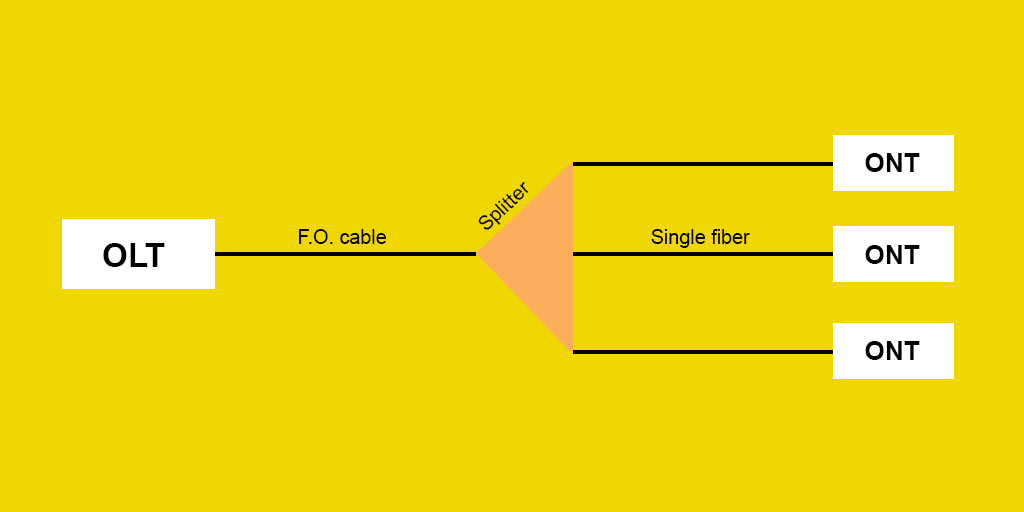Two of the main types of fiber optic networks are Point to Point (P2P) and Passive Optical Networking (PON). This article defines the two fiber optic architectures and it is part of the series ”PeakOptical Fiber Optic Definitions”. All the posts in this category have the purpose of explaining the general terms used in the field of fiber optics.
Point to Point Architecture

The P2P architecture has its core switch at the central office (or Point of Presence – POP) that connects to aggregation switches in the distribution point. The aggregation switches are connected to Optical Network Terminations (ONT) – located in the customer’s house or business, trough their multiple fiber ports
Pros
- Provides symmetrical bandwidth;
- No sharing – each aggregation switch port is connected to individual premises;
- Easy to test and maintainș
- Flexibility – it is able to grow with bandwidth and capacity needs.
Cons
- Quite pricey, as it requires the involvement of multiple components;
- Longer rollout time.
Passive Optical Networking

In the case of PON, the operator deploys an Optical Line Terminal (OLT) in the central office. A single fiber runs to the passive optical splitter and a fan-out connects maximum 64 users. Every user has an Optical Network Unit (ONU), where the fiber terminates.
Pros
- Less expensive to implement and maintain because it uses fewer fiber cables and ports to terminate the fiber;
- Can be located everywhere as the fiber slitters do not require any power supply;
- More complex than P2P and with faster deployment rate.
Cons
- Limited level of bandwidth;
- The download capacity is better than the upload;
- Quite difficult to update, mainly when the bandwidth requirements change.
Source: Primex


